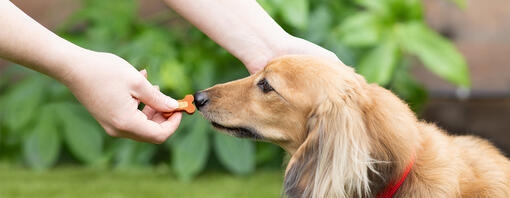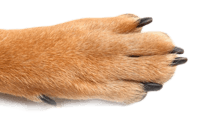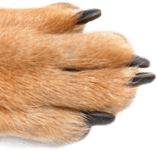
Dogs aren’t just pets they’re loyal friends who bring so much joy to our lives. One of the things that makes them so special is their eagerness to learn. From simple good manners to fun tricks that make everyone smile, training is an important part of helping your dog thrive. The secret? Understanding how dogs learn.
In this article, we’ll explore reward-based training, with a focus on positive reinforcement. It’s a gentle, effective way to teach your dog the behaviours you’d love to see, while also building a stronger bond of trust and companionship. Discover why this kind approach isn’t just about teaching skills, it’s about creating a happier, more connected life with your dog.
Understanding Positive Reinforcement Dog Training
One of the reasons dogs make perfect companions is that they are easy to train. Some definitely make smarter pupils than others but all have the capacity to learn anything from basic life skills that help them fit into our often crazy lives, to some pretty impressive tricks that you can show off to your friends.
By knowing how they learn, we can teach them all kinds of behaviours – and also gain an understanding as to why sometimes they learn things we’d rather they didn’t.
Every time a dog does something in a certain situation, there is an outcome. If the outcome is bad or unpleasant, they’ll avoid doing it again. If it has no effect, they’re unlikely to bother doing it in the future as there is no point. If it has a positive effect and gets them something that they want or enjoy, they are likely to do that again – because it worked. This is called Positive Reinforcement - because it added something positive, and that behaviour is more likely to happen again in the future because it’s been reinforced.
So, when we want to train a dog, we set up situations where they will do the thing we want them to, and then we reward them when they so that they are more likely to choose to do that again in the future. With each repetition, this is further reinforced. It really is that easy!
Even better… because we are working with them and producing the reward, everything we teach using this method improves the relationship and the bond we have with our dogs.
How Do We Reward Dogs?
Rewards have to be things that our dog wants and looks on as being positive, and so finds reinforcing.
Food is the strongest reinforcer we have – especially with puppies, rescue dogs, dogs we don’t yet have a strong bond with, or dogs who haven’t been trained in the past.
This is because food is a primary reinforcer. We do not have to teach dogs that food is good – it just is. Everything else that we could use as a reward, a dog has to learn is good. Praise, games, stroking/hand contact… a dog has to learn that these are good and often owners over-estimate how rewarding they actually are and, in some cases, don’t notice that they are actually aversive. As an example, a rescue dog who has known abuse in the past or just doesn’t trust people’s hands, is very unlikely to look on being stroked or patted as a reward.
There are other ways to reward a dog – but they are not so useful when we are training exercises or lifeskills. As an example we can reward a dog for sitting at the door by opening the door and letting them out into the garden.
Tiny, tasty dog treats are an easy way to reward a dog that are reinforcing, quick to eat, don’t break the dog’s concentration, and don’t disrupt the training process.
Marking The Behaviour (Marker Training/Clicker Training)
No matter how quick we are with giving a treat, there is always a gap between what the dog has dome that you want to reward, and getting the food into their mouth! This can be confusing for the dog as they don’t quite know precisely which bit you liked. What you need is a marker that means “that is the thing I want to reward – and the thing I want you to do again”.
You can use a clicker (a plastic box with a metal tongue you can press that makes a clicking sound) – or you can use a special word like “yes” or “good” – whichever you prefer. A clicker is immediate and has a unique sound that your dog won’t hear at any other time but a word you will always have with you – and some dogs are wary of the noise of the clicker (and some owners find they just have too much in their hands to coordinate).
The marker doesn’t replace a treat/reward – in fact to be effective, it always means “a treat is coming”. It just gives you some time to deliver it.
So as an example, if you are teaching your dog to sit, the moment their bottom touches the ground you use the marker (word or clicker) and then give the treat.
How to Give Rewards to Your Dog
There are a variety of ways to give treats when you are training. You can give your dog a treat directly from your hand if they are gentle and you are training an exercise that means they are close to you. You can drop them on the ground if they are excited and grab, or if you want them to be focusing more on the ground. Or if you want to be dynamic in your training or if you are training an exercise where you need them to move away from a position before you ask them to do it again (mat training for example), you can throw the treat away from you. Different ways work for different exercises – and different types of treats.
Non-Food Related Rewards for Dogs
You can train a dog using any reward they are motivated to work for. This can be play (tuggy games), toys, or access to somewhere they want to go. These can be just as powerful in reward-based training but they tend to be better for one off things (asking for a sit before letting them into the garden, or asking them to wait before you put down their dinner) as they can break the flow of the training.
The Benefits of Reward Based Training
It can and should be started as soon as your puppy comes home with you – and can be used to train everything from basic life skills to advanced behaviours and tricks
It builds trust and establishes the relationship between you
Everything you teach your dog using reward-based methods deepens the bond between you
Reward-based training teaches your dog exactly what you want them to do in certain situations – and every success further reinforces that
Positive Reinforcement for Puppy Training
Positive reinforcement is particularly vital for puppies. Their early experiences shape their view of the world and their relationship with you. By using reward-based methods, you build confidence, prevent fear, and establish a strong foundation for future learning. It allows you to gently guide them through their crucial developmental stages, making training a fun and positive experience from day one, which is essential given their short attention spans and natural curiosity.
Why Avoid Negative Reinforcement, Punishment, and Aversive Training?
While dogs will avoid doing things that result in a negative outcome, using punishment, fear, or startle responses reduce the trust a dog has in their owner – and changes their view of the world. Dogs trained using reward-based methods have been showing in studies to be more optimistic whereas dog trained using punishment or a combination or reward and punishment, have been shown to be more pessimistic.
This loss of trust can lead to a loss of enthusiasm for learning (so making training harder) potential behaviour problems (including aggression) in the future, and a fear of the owner or a reluctance to being handled.
Reward based training teaches a dog how we want them to behave in a certain situation and through repetition, makes that behaviour more likely until it becomes the default response. Punishment only tells them what we don’t want them to do – and gives no guarantees what they will do instead next time.
Punishment does work to change behaviour- even if not predictably - but thankfully we have come a long way in our understanding of dogs and how they learn, and have the knowledge and the skills to train or dogs in ways that works just as well, and better still, builds trust, enhances our relationship and does not cause our dogs pain, fear or stress.
Common Mistakes
Making treats too big – this means your dog gets full quickly or else has to keep stopping to chew the treat. Treats for training should be tiny (about half the size of your little finger nail) and be easy to eat.
Using boring treats – treats need to be worth working for!
Training at the wrong time – your dog isn’t going to be keen to work if they are sleepy or has just had dinner.
Being over-reliant on the treats. Many exercises are first taught using treats to lure the dog into position, but it is an important part of training each exercise to move away from luring as soon as the dog understands the behaviour – rewarding the completed behaviour instead.
Probably the best part of reward-based training is that it is fun for both you and your dog. Every session builds your relationship and your bond and increases the trust between you.





